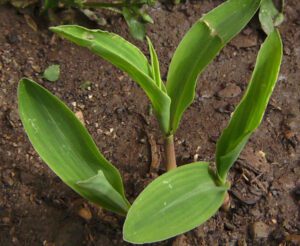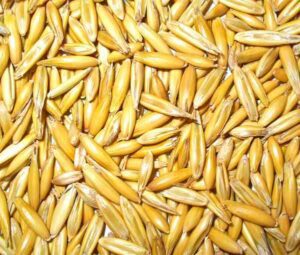Rice is the most widely consumed staple food for over half of the world’s human population. It is a cereal grain which is the seed of the grass species Oryza sativa. Rice is the agricultural commodity with the 3rd highest worldwide production, after sugarcane and maize.
You might not consider where your food originates. If you buy groceries from the store, you may not wonder about supply chains or whether what you bought supports sustainable practices.
In this article, we’ll talk about rice, a longtime human staple that’s filling and versatile. You can get rice from sustainable sources, and you can do many things with it.
How Can You Tell Whether You’re Buying Rice from Sustainable Sources?
Sustainable rice farming practices exist, and you should know about them. Farmers in the rice-growing industry sometimes abbreviate sustainable rice farming. They use the abbreviation SRI.
SRI usually means not keeping fields flooded. Instead, these farmers build upon soil fertility. They use compost, as well as other organic amendments.
They plant rice less densely than non-sustainable rice farmers. The rows are spread out. Each plant has more growth room this way. You can get much higher yields from each plant, and you’re not harming the environment.

Some Sustainable Rice Farming Basics
Farmers who consider sustainable practices want a better world for themselves and future generations. They often use less water when farming rice and other useful crops.
They use techniques like rainwater collecting. They also use groundwater recharging. They time their rice paddy transplantation so it’s less harmful. They might set up a canal system that can reduce seepage losses by quite a bit.
It might surprise you, but farmers can grow rice more sustainably than many other crops if they use the best practices available today. They can maintain their current crops, use less water, and produce more edible rice if they learn the latest techniques and use the most advanced technology.
Why Must Farmers Use Sustainable Practices?
Agriculture lets humans live more easily, but it can strain the environment if we’re not careful. In recent decades, humans have seen how our waste harms the planet. However, we can grow crops with less of an environmental impact if we take the time to learn how.
Farmers can expand humankind’s natural resource base if they act responsibly. They can improve and maintain soil fertility as well. That’s what helping the planet means: farmers working with the earth and not against it.
Sustainable farming reduces costs on many occasions, and it lessens pollution. It’s an animal-friendly thing to do, as the farmers kill and displace fewer species. Farmers who use sustainable practices promote biodiversity. They also make food products that don’t harm the public since they use fewer pesticides.
What Can You Do with Rice?
Rice farming has a long and storied tradition and it goes back thousands of years. In fact, scientists and historians believe humans in 8,000 BC cultivated and ate rice.
India and China seem like the places where rice first appeared. Carbonized rice grains first appeared near the Yangtze and Yellow Rivers in China. You can’t find older rice than that. Scientists can date the grains there and say conclusively they existed from 10,500 to 11,000 years ago.
You can eat rice plain, though it has little flavor. You can get it with your Chinese food and use it as a base. You can put chicken, pork, or beef on top of it so that the flavor seeps in. The sauce flavors the rice, and it is filling and comforting when you eat it.
What Else Can You Do with It?
You might also use it to make soup. You can add some soup stock and a protein, along with some vegetables. You can use it when making sushi. Many different sushi rolls require rice. It balances out the flavors from meat, seafood, and other ingredients.
You can sop up something spicy with rice. You might make fried rice by adding eggs and other ingredients. You can make sweet desserts with rice. Making rice pudding isn’t difficult, but it feeds any sweet tooth.
You can make a creamy risotto with it. You can fill up a burrito along with other ingredients. Some Italian appetizers feature rice. You might also make some rice cakes.
Several cultures use rice and serve it with nearly every large meal. Chinese food features rice, but so does Japanese cuisine, Indian cuisine, Lebanese cuisine, Indonesian food, and many more.

It’s Inexpensive
You might also buy rice because it’s inexpensive. You can get it in enormous bags at the grocery store, and it doesn’t cost very much. Rice can get the cash-strapped college student through some tough times.
You might also buy rice in bulk when you visit Costco or Sam’s Club. Maybe you live in an expensive city with several roommates. You can all chip in and buy bulk rice. It can last for months, though you must get creative when preparing it to stave off boredom. You can add a little butter and salt to rice and make a tasty side dish that goes with virtually any protein.
Which Rice Should You Buy?
You might also notice that you have several rice brands from which you can choose when you visit the grocery store. You may feel they’re all the same, but that’s not the case.
You can look up each rice brand online and look at their websites. You might see that only certain brands promote the sustainable farming practices that we mentioned earlier.
Buying that brand from now on helps the planet. You can probably pay the same price and get the same quality, but you are making the world a better place by taking this one simple action.
You want a rice company that has superior quality but also environmentally-friendly practices. It takes just a few moments to do the necessary research and learn about the company from which you purchase the food staples you use in your kitchen at home.
Once you determine you are getting rice from a company that doesn’t harm the planet, you will feel good about yourself. You are contributing in your own small part, and it likely will not inconvenience you at all.






